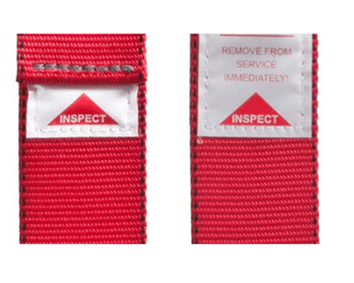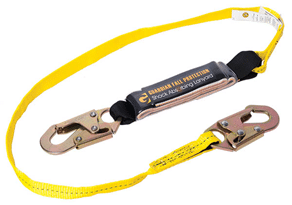The Bailey Blog
Fall Protection Inspection Personal fall protection systems such as harnesses and lanyards can save your life in the event of a fall from heights. However, if your equipment isn’t in good shape, you could be putting your life at risk. It is important to inspect your fall protection equipment prior to every use.Always follow the recommendations of the manufacturer of your gear for inspections and maintenance requirements. Here are some things to look for:
Harness Inspection:
a. Labels
All labels must be present and fully legible with the last annual inspection less than 12 months prior to the current date documented on the inspection tag. If the weight capacity in not legible, the equipment must be taken out of service.
b. Stitching
If any stitches are pulled or broken, the harness must be removed from service. Closely inspect “critical stitching” which will be in a color that contrasts with the webbing.
c. Webbing
Inspect for cuts, tears, stretching of fibers, fraying, raveling of edges, excessive wear or abrasion, chemical damage, burns, UV degradation, and weld splatter. Hold hands six to eight inches apart and flex webbing into a “U” shape to reveal frayed or broken fiber. The presence of hardened or discolored spots on the webbing indicates chemical or excessive heat exposure. Check the shock load indicator on the back straps below the D-ring.

d. Connectors
Inspect all metal components including “O-rings”, “D-Rings” leg grommets, chest strap connecting hardware, and adjustment components. Look for cracks, heat damage, distortion, corrosion, and excessive wear.
e. Cleaning and Storage Instruction
Excessive accumulation of dirt, paint, or other foreign matter may prevent proper function of the harness, and in severe cases, weaken the webbing. Store the harness in a dry place, out of direct sunlight, preferably hanging by the rear D-ring.
Lanyard Inspection:
a. Labels
All labels must be present and fully legible with the last annual inspection less than 12 months prior to the current date documented on the inspection tag. If the weight capacity in not legible, the equipment must be taken out of service.

b. Connectors/Snap hooks
Make sure connectors are operating properly. Snap hook must have a double locking mechanism that does not allow latch to open without releasing the first lock, and springs into locked position when released. Also inspect for cracks, distortion, or corrosion.
c. Shock Absorber
Inspect all areas of the cover. The cover should not be torn or damaged. Ensure the webbing content of the absorber has not been stretched, or Un-stitched in anyway. Remove from service if defective.